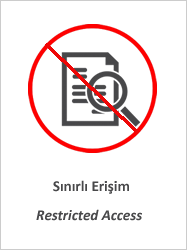Metal concentrations of wild mushroom species collected from Belgrad forest (Istanbul, Turkey) with their health risk assessments
Abstract
Wild edible mushrooms are very popular for both their flavors and nutritional values. However, some mushroom species can be harmful to human health as they accumulate some elements in excessive amounts. The aim of this study was to determine the concentrations of Al, Ca, Cd, Cr, Cu, Fe, K, Mg, Mn, P, Se, and Zn of some wild edible (Agaricus arvensis, A. bitorquis, A. sylvaticus, Amanita vaginata, Armillaria mellea, Clavariadelphus pistillaris, Clitocybe nebularis, Clitopilus prunulus, Hygrophorus marzuolus, H. russula, Lactarius volemus, Lycoperdon molle, and Macrolepiota mastoidea) and non-edible mushroom species (A. citrina, Auricularia mesenterica, Chanterellus melanoxeros, Chondrostereum purpureum, Clathrus ruber, L. controversus, L. helvus, and L. zonarius) collected from Belgrad forest (Istanbul, Turkey). Daily intakes of element (DIE) and health risk index (HRI) values of the edible mushroom species were also calculated. The concentrations of the elements in question were determined to be in the ranges of 9.7-556.8, 2.5-2226.7, 0.06-2.52, 0.03-13.17, 3.74-100.19, 13.3-507.4, 2635.0-28614.0, 493.0-2412.0, 6.97-3150.73, 0.29-13.26, 0.38-3.67, and 9.1-293.8 mg/kg, respectively. The Cd concentration of H. russula (DIE: 1.08, HRI: 1.08), Cr concentration of C. nebularis (DIE: 5.64, HRI: 1.88), and the Cu concentration of M. mastoidea (DIE: 42.94, HRI: 1.07) were above the reference values. The results showed that the long-term consumption of H. russula, C. nebularis, and M. mastoidea collected from Belgrad forest can have a negative impact on human health. Therefore, it was concluded that the element concentrations of edible wild mushrooms in this region should be examined periodically.
















